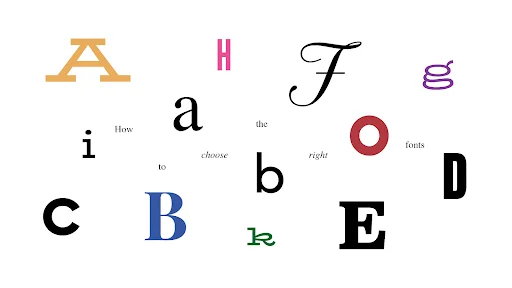Good web design is more than just a visually pleasing aesthetic; it’s also about creating an effective user experience.
One of the most important elements in achieving this goal is selecting the right font for your website.
Choosing fonts that are easy to read and aesthetically pleasing can go a long way towards making sure visitors enjoy their time on your site and come away with a positive impression.
But how do you choose which fonts are best suited for web design?
In this guide, we’ll discuss some key factors to consider when picking out fonts for your website, as well as provide some tips and tricks for finding the perfect font combinations.
1. Readability
The most important consideration when selecting a font for web design is readability.
You want to make sure that the text on your site is easy to read, even if visitors are viewing it from a distance or on small devices.
Fonts with good readability should have an appropriate x-height (the height of lowercase letters relative to the font size) and generous letter spacing between characters.
Serif fonts, such as Georgia or Times New Roman, are often considered the best choice for web design due to their legibility at small sizes.
2. Aesthetics
While readability should always come first, aesthetics are an important factor to consider when selecting fonts for your website.
The font you choose can set the tone for your site, so it should be appropriate to the content and target audience.
For example, a font such as Lobster may be great for casual sites focused on lifestyle topics, but would look out of place on a professional business website.
3. Font Combinations
Once you’ve chosen the main font for your website, you’ll need to find complementary fonts to use for headings, accent text, and other design elements.
When selecting additional fonts, try to keep a consistent theme so that the overall design looks cohesive.
As a general rule of thumb, you should aim for contrast between fonts: try pairing a bold font with a light one, or using serif and sans-serif typefaces together.
You can also experiment with different weights and styles to create a more interesting design.
4. Accessibility
When selecting fonts for web design, it’s important to consider accessibility as well.
For example, monospaced fonts can make text difficult for people with dyslexia or other learning disabilities to read, so it’s best to avoid them if possible (unless you are targeting a specific audience that uses them).
Additionally, make sure to choose fonts that are available in a wide variety of languages; this will ensure your website is accessible to a larger number of visitors.
5. Choose Fonts Based on Branding
If you are designing a website for an established brand, then the font choice should be based on that company’s branding guidelines.
Don’t just pick any font at random; make sure to select something that is consistent with the brand identity and aligns with the overall design of the site.
Similarly, it’s best to pick fonts that align with your brand’s overall vibe. For example, if you’re a government contracting site and hope to create authority, whimsical, fun fonts are not going to add to that message and perhaps even distract from it.
6. A/B Testing Font Options
Don’t be afraid to experiment and A/B test different font options. Try out a few different combinations to see which ones look best, or split-test two versions of the same page with different fonts to see how visitors respond.
This is an important part of making sure your website looks its best and meets the needs of your target audience.
If you’re worried about how changing fonts may affect site visitors once the site is live, you might consider doing some pre-public testing with a control group.
This process can also help with detecting any bugs or issues before going live. To help automate the process, you might also consider using a bug-tracking tool like BugHerd.
7. Font Management
You’ll need to manage the fonts you use on your website. Websites often have a large number of font files, which can slow down page loading times and make it difficult to manage them all.
To simplify things, consider using a font management tool such as Adobe Typekit or Google Fonts.
These platforms enable you to easily find and add fonts to your website without having to download and install them individually.
Conclusion
Choosing the right font for your website is an important part of creating a successful user experience.
To make sure you pick fonts that are easy to read, aesthetically pleasing, and accessible to all users, consider factors such as readability, aesthetics, accessibility, licensing requirements and branding guidelines.
With these tips in mind you can find the perfect font combination that will help ensure visitors have an enjoyable time while browsing through your content.



